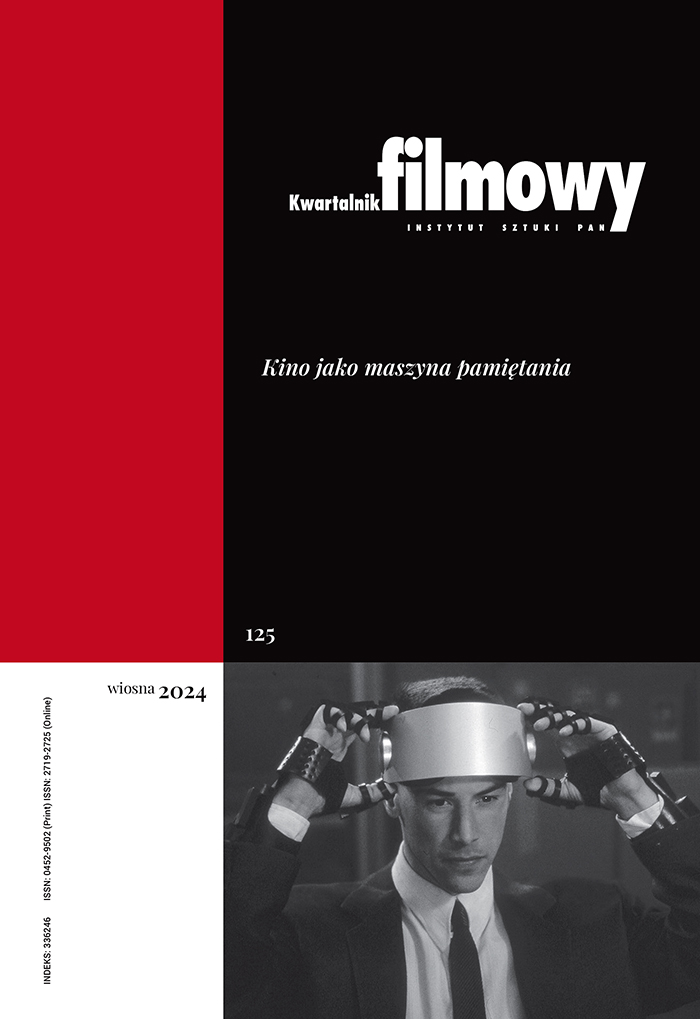Beautiful Life and Still Life: Silence as an Aspect of Perception of Art
Abstract
In the first part of the article Kiepuszewski considers the specific feedback between the rhetoric of art criticism, dominated by the topos of silence, and the way the public image and the official biography of the artist are created. In the second part the author analyses how Giorgio Morandi's work was received by film makers. Morandi's Natura Morta was one of the “characters” in Federico Fellini's La Dolce Vita (1960). The analysis of the way Morandi's paintings became a part of the film allows us to reconsider the status of silence in the work of the artist, and it uncovers minutia absent from the discourse of history and art.
Keywords:
Federico Fellini, still life, silence, Giorgio MorandiReferences
Abramowicz Janet, Giorgio Morandi. The Art of Silence, Yale University Press, New Haven – London 2004, s. XII, 99-165, 179, 213.
Google Scholar
Bryson Norman, Looking at the Overlooked. Four Essays on Still Life Painting, Reaktion Books, London 1990.
Google Scholar
Didi-Huberman Georges, Fra Angelico, Disemblance & Figuration, tłum. J. M. Todd, University of Chicago Press, Chicago – London 1995, s. 126.
Google Scholar
Freud Sigmund, Niesamowite, tłum. R. Reszke, w: Pisma psychologiczne (Dzieła, t. III), KR, Warszawa 1997, s. 233-262.
Google Scholar
Hood William, Fra Angelico at San Marco, Yale University Press, New Haven – London 1993, s. 263-268.
Google Scholar
Kornatowska Maria, Fellini, Wydawnictwa Artystyczne i Filmowe, Warszawa 1989, s. 76.
Google Scholar
Lamberti Maria, The Conventions and Convictions of Painting Genre, w: The Later Morandi – Still Lifes 1950-1964, Venice, Peggy Guggenheim Collection 30.04-13.09.1998, red. L. Mattioli Rossi, Milan 1998, s. 32-33.
Google Scholar
Authors
Łukasz Kiepuszewskikwartalnik.filmowy@ispan.pl
Adam Mickiewicz University, Poznań Poland
Adiunkt w zakładzie Teorii i Historii Sztuki Instytutu Historii Sztuki UAM w Poznaniu. Autor książki Obrazy Cezanne ’a. Między spojrzeniem a komentarzem. Obecnie zajmuje się problematyką wizualności w myśli Fryderyka Nietzschego.
Statistics
Abstract views: 218PDF downloads: 81
License
Copyright (c) 2009 Łukasz Kiepuszewski

This work is licensed under a Creative Commons Attribution 4.0 International License.
The author grants the publisher a royalty-free non-exclusive licence (CC BY 4.0) to use the article in Kwartalnik Filmowy, retains full copyright, and agrees to identify the work as first having been published in Kwartalnik Filmowy should it be published or used again (download licence agreement). The journal is published under the CC BY 4.0 licence. By submitting an article, the author agrees to make it available under this licence.
In issues from 105-106 (2019) to 119 (2022) all articles were published under the CC BY-NC-ND 4.0 licence. During this period the authors granted a royalty-free non-exclusive licence (CC BY-ND 4.0) to use their article in „Kwartalnik Filmowy”, retained full copyright, and agreed to identify the work as first having been published in our journal should it be published or used again.











